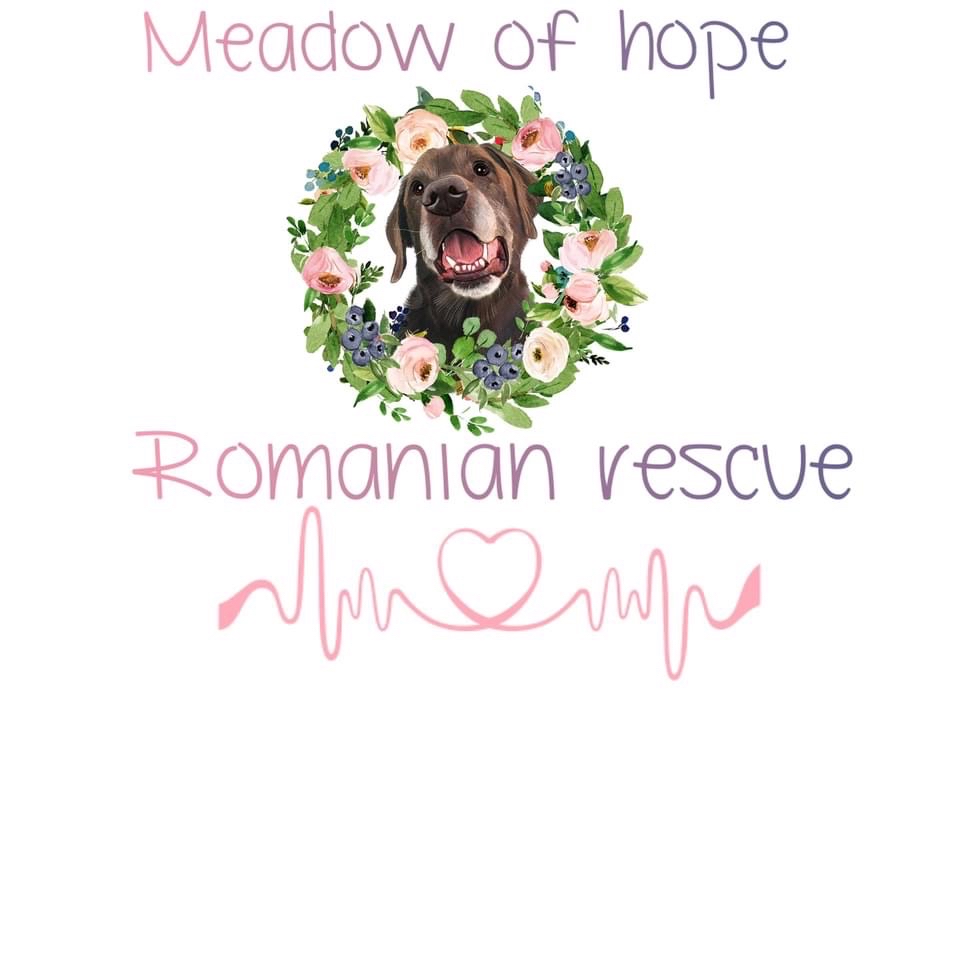
Adopting is one of the best things that you can do.
When you adopt a Romanian rescue dog, you’re not just giving a deserving dog a home; you’re also making space for another soul so desperately in need to be rescued.
Help us to save another life today.
About
Meadow of hope Romanian rescue
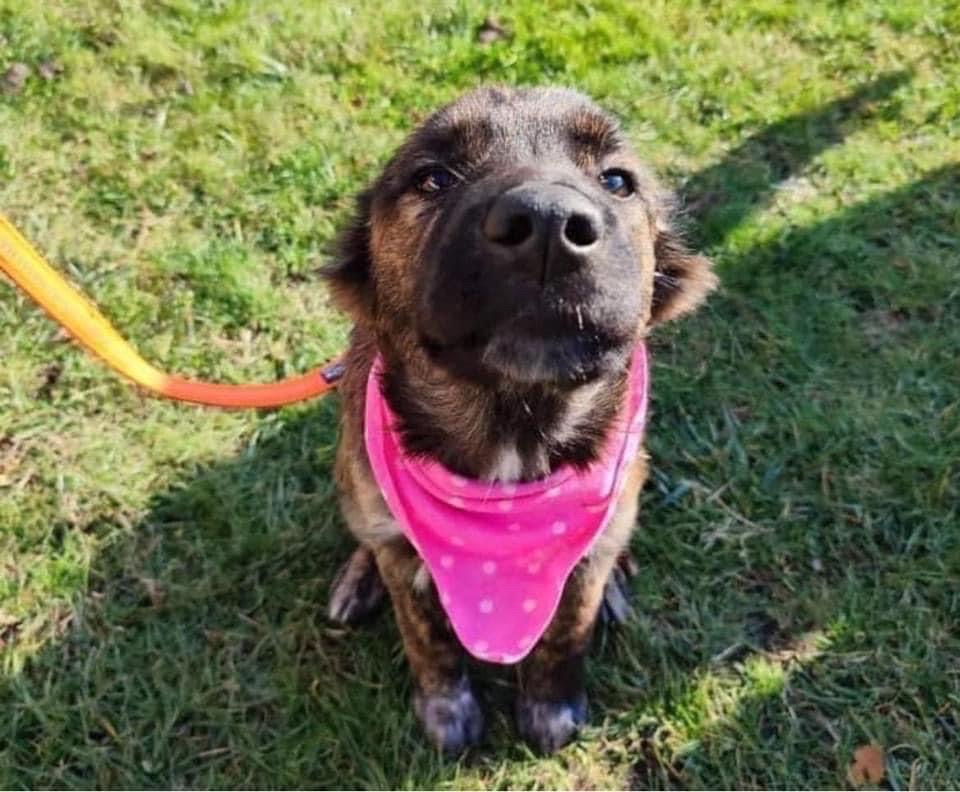
We are a non profit rescue saving dogs from the streets of Romania
Many of these dogs have never lived in a home environment, never felt love or felt safe.
Our passion is to make change.
To support our rescuers in Romania and to help them save so many innocent lives.
Please support us today PayPal : Laurenemma08@icloud.com
Introduction
Romanian rescue dogs

In Romania Public pounds are full to bursting with dogs that have experienced severe injury, abuse and trauma. The conditions in the majority of these institutions are hellish – diseased, and overcrowded.
thousands of dogs have no brighter future to look forward to than one behind bars, trapped in a cage, in constant fear for their safety.
The alternative is a life on the streets. Hundreds of thousands of dogs roam the streets and countryside of Romania, facing gruelling weather and a stark lack of food. Survival is a daily challenge, one that only the lucky few manage to achieve. Hundred upon hundreds of puppies are born into this lifestyle on a daily basis, condemned to a life of struggle before they’ve even opened their eyes.
Stray dogs are considered vermin by many in Romania.
stray dogs breed quickly and overrun towns and villages. Cases of cruelty against strays have been widely publicised with stoning, beating, mutilation, shooting, stabbing and poisoning.
But luckily their are angels in Romania who dedicate their life to saving and protecting these dogs.
Please welcome Oana and Dana, iuga and Andreea, four incredible ladies facing this every single day.
The journey doesn’t stop for them once the dogs have travelled they follow their journey for the entire dogs life. And they will be in chat for any help and guidance.
Process
The process adopting a Romanian rescue dog with meadow of hope Romanian rescue

Adopting a dog from Romania through Meadow of hope rescue.
If your dog is a Romanian rescue they have a long journey ahead of them. We support a dedicated team of rescuers in Romania helping dogs from all different situations
Many of the dogs are street or kill shelter survivors
A seat on the Meadow of hope bus 🚌
Once all processes are complete you will hear us talk about the Bus. Places will be booked on the bus to transport our dogs to the U.K. this process doesn’t start until homechecks are completed and approved by all the team and the reserve donation is received.
Our reserve donations for all our dogs is £125 payable directly to your chosen dogs rescuer to cover their dhlpp vaccines including kennel cough, Routine Tests: including brucellosis tests
We use defra approved, safe, clean transport, to transport the dogs on their journey to the U.K.. They have regular food and water changes throughout the journey but all dogs remain on the bus for the duration of travel for their safety.
The buses all have temperature control systems and safe transport crates with a lockable system.
The journey 🚌
Once your dogs are collected from their place of shelter or foster they are in for a long journey. Travel can take anywhere from 3- 5days. Our dogs won’t be the only rescues on board as other rescues will use the transport for their dogs. Sometimes this can be up to 30 dogs on one bus. On board will be two dedicated drivers looking after the precious cargo.
When your new dog arrived they will tired from the journey and will need time to decompress.
The day before travel you will be added to a transport chat with other adopters from our rescue and the rescuers. This will give you the opportunity to speak with other adopters and also your rescuer who saved your dog. It’s also where you will receive great advice and important information to settle your new dog safely into your home.
Once arrival times are posted we ask that the chat remains quiet so people don’t miss their drop off times.
The journey they take is as follows: 🗺
Romania 🇷🇴
Hungary 🇭🇺
Austria 🇦🇹
Germany 🇩🇪
Belgium 🇧🇪
France 🇫🇷 🚊
England 🏴
Once they are in the U.K. your dedicated drivers will draw out their drop of points and eta’s which will be posted on the group chat.
Drop off information ℹ️
You will need a slip lead at the ready to collect your dog, without this the drivers will not hand over any dog for safety reasons. The transport team will hand over your dogs passport and papers. Once you have received these we ask that you take your new baby straight inside your homes.. all chip information and vaccines can be found in their pet passport .. dated and signed by the veterinarian in Romania. When visiting your own vet we ask that you always take your psssport with you.
Need help?
Your dedicated admin and rescuer team here at Meadow of hope rescue are always on hand for support and advice so please keep your personal adoption chats open.
We thoroughly hope that your experience with Meadow of hope rescue has been a pleasant journey so far. We look forward to continuing too help and support you going forward.
Sponsor
We need you today
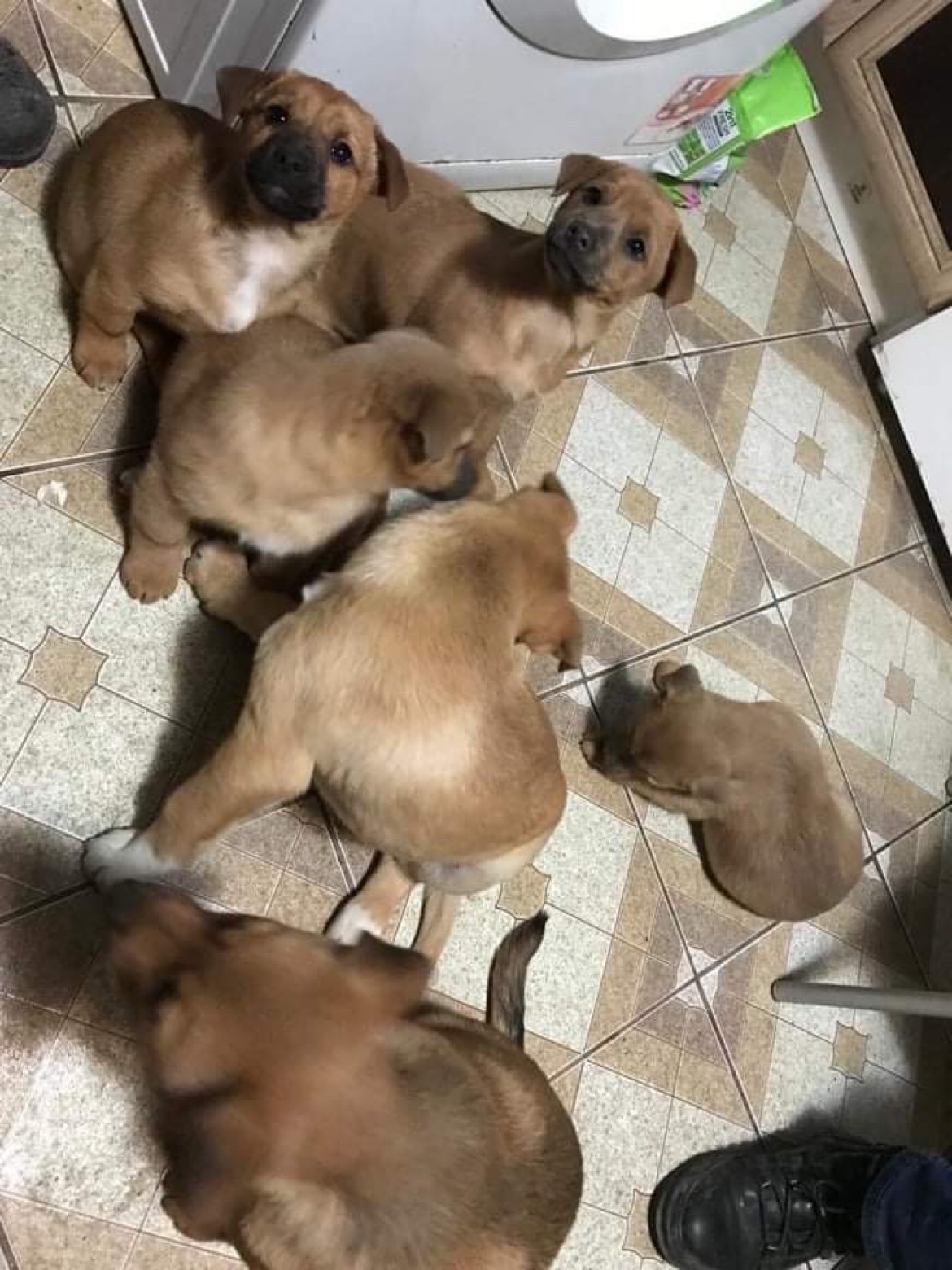
To help feed, vaccinate and care for stray dogs we rely heavily on sponsor
Please sponsor a rescue dog today and make a difference to a innocent souls life.
Help needed for poorly puppies
Help needed
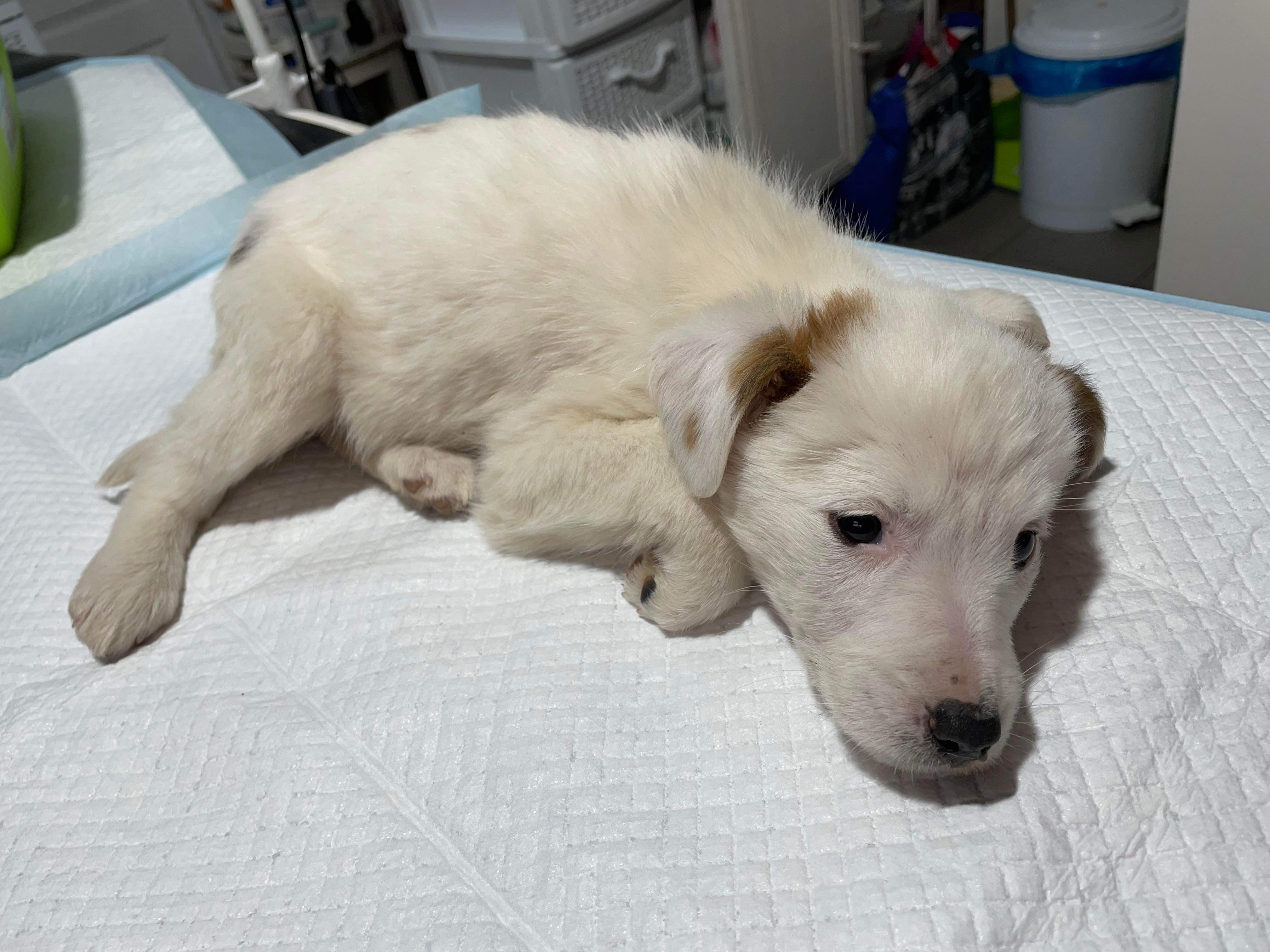
Please help us treat our poorly babies
https://www.paypal.me/LGilbert650?locale.x=en_GB
Guide
Introducing dogs and cats

🐈⬛🦮Introducing dogs and cats that will be living together 🦮🐈⬛
Although dogs and cats are often portrayed as enemies, if introduced carefully, they can actually get on extremely well. If either pet or both have lived with the other in a previous home, then the introduction process is likely to be easier. However it is still a good idea to take things slowly by following the advice in this leaflet – a gentle introduction is far safer than a rushed one, and will hopefully result in both pets becoming good friends.
Preparation
Whether you are introducing a new cat to your resident dog or vice versa, you will need to provide a safe area for the cat that your dog will not be able to access. If you are taking on a new cat, a spare room is ideal as they will need time to adjust to their new surroundings. If you are bringing in a new dog, choose an area where you know your existing cat will feel safe. Move all essentials to this area - a bed, food and water and a litter tray (even if your cat normally toilets outside). Even if your resident cat is confident, the introduction of a new dog will be unsettling at first, so safe access to resources will be necessary. Stair gates are invaluable when introducing cats and dogs, as they allow the pets to see and smell each other safely, and allow for ‘dog free areas’, which are essential until both animals see each other as one of the family. They come in various heights, so choose an appropriate one for you – some even have cat flaps built in, to allow the cat to move easily (very useful for older or arthritic cats), although these won’t be appropriate if you have a small dog that could fit through the hole. If You Don't Have A stair gate set up already, introduce one as early as you can to allow the existing pet to get used to it prior to bringing the new pet home.
Installing a Feliway diffuser a few days before you bring your new pet home is a good idea, especially if the cat has not lived with dogs before or is of a nervous disposition. A Feliway diffuser emits pheromones that help cats feel safe – so this may help the cat feel more comfortable during the introduction period.
It is also important to ensure that your home has plenty of high places that a cat can easily access. Cats naturally like to rest and hide in high places, and this will be particularly important later on in the introduction process.
Extra care when introducing kittens
Kittens are far more vulnerable due to their size and as they are usually more playful and active than an adult cat, they are more likely to excite a dog. If you are introducing a kitten to a dog, a stair gate won’t be practical as they will easily be able to slip through the bars, so for safety reasons the initial introduction is best carried out by placing the kitten in a dog crate. The dog crate should be large enough for a litter tray, a scratching post, bed and places to hide. Allow the kitten to get used to being in the crate prior to meeting the dog, by placing the crate in the area you have chosen away from the dog, so they get used to going in and out. Pop a blanket over one side which will help the kitten feel safe
Dog crates
If your dog is already crate trained, you can use it as part of the introduction process when you cannot directly supervise your dog. If your dog isn’t used to a crate, then it’s a good idea to get them used to one in preparation.
The importance of scent
For both cats and dogs, smell is extremely important for communication. You can integrate the new pet into your home more successfully by making sure that they smell of ’home’ before being introduced. You can start this process even before you bring your new pet home by exchanging bedding between the pets if this is possible. This way, they get to know a bit about each other, even before they meet.
Early days
Once your new cat or dog is home, it is best to keep them separate at first. If you are bringing a new cat into your home, avoid the temptation to let them explore your home at first, as they will need a few days to adjust to their new surroundings. This will also give you plenty of time to carry out the important process of ‘scent swapping’. To do this, stroke each pet without washing your hands to mix scents and exchange bedding regularly. Also gather scents from the new pet’s head by gently stroking with a soft cloth and dabbing this around your home and furniture to mix with your existing pets scent. For this reason, it is useful to delay the pets from meeting for a few days or even a week. If you have bought a new cat, let them explore the rest of the house when your dog is out of the house for a few hours.
First introductions
Where this takes place will depend upon the layout of your house, but ensure that the cat has an easy route back to their ‘safe area’. If your dog gets excited easily, then first introductions are best carried out after exercise, when your dog is likely to be calm.
One of the most important rules of introducing cats and dogs is to make sure that the dog is prevented from chasing the cat. Even if your dog does not want to hurt your cat, your cat will feel threatened and unlikely to want to be anywhere near your dog in future! Once a dog develops a habit of chasing, it can be difficult to stop them, so it is best to prevent it from happening in the first place.
Put your dog on a lead behind a stair gate and have some tasty treats at the ready to reward them for calm and relaxed behaviour. Allow your cat to see your dog and approach if they want to. Most cats like to spend time ‘watching’ and will take their time to decide whether it is safe to approach or not. It’s important that they are allowed to do this in their own time, so avoid bringing your cat closer yourself – you may get seriously scratched or bitten if they panic.
Your dog is likely to show some interest at this stage and what they do will depend on the individual. If they become overly excited and begin to bark, then you may need to use some food to distract them at first or move them further away. Looking at the cat for short periods is absolutely fine, but if they stare for too long, use food to interrupt. Don’t forget to praise and treat your dog for behaving well. If you are introducing a kitten in a crate, make sure that there is plenty of distance between them and take not to overwhelm either pet. Remember that the Kitten won’t have as many escape options available, so take care not to overwhelm them by keeping your dog at a distance at first.
Keep these initial interactions short at first and try to end on a positive note.
If either your cat or dog appears frightened, go back a few steps and keep them apart for a while longer. Continue scent swapping regularly and try again the next day. If you keep these controlled, short meetings up regularly you should see an increase in the cat's confidence and a reduction in the dog’s excitement as they become more familiar with each other, but if you don’t and are concerned about either pet’s safety, then it’s important to seek professional help. If your cat or dog was rehomed from the Shelter, then please contact the centre you rehome your pet from and we will do our best to help you.
Maintaining good relations
As things progress in the right direction, you can allow the cat and dog to interact more freely, but until you are sure they have become good friends, keep your dog on a ‘houseline’ to prevent any chasing. This is a lightweight lead without a handle, designed to trail behind your dog without your dog really noticing, yet allowing you to take control should you need to (e.g. if you think your dog may be getting too excitable, you can step on the line or pick it up). Breeds that like to chase, such as terriers or greyhounds, may need to be kept well under control until they have learned that the cat is not to be chased. Take extra care with young energetic dogs who are easily excited - you may need to work hard to keep things calm and be aware that a sudden dash from the cat might trigger a chase.
If all goes well and both pets are comfortable with each other, you can progress to removing the houseline, but make sure you are there to manage the situation carefully and ensure there are high places that your cat can use to feel safe. Never leave the dog and cat together unattended until you are happy that they are safe together.
Cat food is hugely tempting for any dog, so keep it well out of the way. Likewise a litter tray can be pretty tempting too, and should be kept out of your dog’s reach. Cats need to toilet in private and if your dog is able to access the litter tray easily or pester your cat while toileting, your cat is likely to become distressed and may even resort to toileting elsewhere in the house.
Remember that all pets are very different and you’ll have to work at the pace that they are comfortable with. Some introductions will progress quickly without a hitch, but others may take several months. It’s important not to rush things – take things slowly and carefully, and this will hopefully result in your cat and dog living together peacefully or even becoming the best of friends
Keep Them Separated
If you are bringing a new dog or cat into your home, it’s important that the pet gets adjusted to a new space without the added stress of additional animals right away. In this instance, Bales suggests keeping the cat in a separate environment with plenty of stimulation for several days.
A closed bedroom or large bathroom decked out with scratching posts, toys, food, water and the litter box is the perfect option for a new cat. Be sure to also give him a lot of attention during this time. If you’re bringing home a new dog, consider keeping your existing cat in a separate portion of the house and follow crate-training protocol with the dog.
Bales suggests placing some of each animal’s personal items—like beds—in the other animal’s space during this time period so that the cat and the dog become accustomed to each other’s scents. You can repeat this process until it’s no longer stressful for both animals. Once your cat is calm, eating well, and using the litter box consistently, it’s time to make the introductions.
Keep the First Meeting Quick
When you are ready to introduce your cat to your dog, make the initial meeting a quick one— approximately ten minutes. Keep the dog on a leash and allow the cat to roam around and venture as close to the dog as he or she wishes. Use a head collar (halter) on your dog if there is a chance that you may not be in complete control of the situation. Reward your dog with treats and praise for calm behavior around the cat.
As long as the process is going smoothly, gradually increase the time the animals spend together. Once you feel comfortable, allow your dog to also move around freely, but keep his or her leash attached so that you can quickly regain control if needed. Be patient—it may take weeks or even months for cats and dogs to finally accept each other and be comfortable.
Consider Your Pet’s Personality
Dr. Lisa Radosta, a board certified veterinary behaviourist in West Palm Beach, Florida, says that your cat or dog’s personality is a good predictor of his or her ability to get along with another pet.
“If your cat has lived with dogs previously and is confident around other animals, you are likely to have an easy transition,” she said. “However, if your cat puffs up, hisses, or runs from other animals, you will have a more difficult time
Dr. Radosta also says to consider your dog’s personality. “Is he playful but not aggressive? Dogs with this temperament will more easily adapt to a cat. The dog that is lunging, growling, and difficult to control may never be safe with your cat. If this is the case, consult your veterinarian.”
If your cat is the confident type and your dog is the easygoing type, it is best to let your cat handle things. Even then, however, the meeting should not be free-for-all. “Put your cat on a higher surface than the dog and put your dog on the leash for the meeting,” Dr. Radosta said.
Supervision is Key
Keep your cat and dog separated when you cannot directly supervise them until you are fully confident that they present no risk, Dr. Radosta said. The safest way to do this is to keep your dog in a crate.
“Even a dog who simply wants to play can seriously or fatally injure a cat,” she said. “Dogs can jump over or bust through baby gates leaving cats in a dangerous situation.”
Likewise, you’ll want to provide your cat with a safe place where he or she can escape the dog. This could be a cat tree that the dog cannot climb or a separate room with a cat door installed. “Once cats run, dogs chase. It is very important to prevent this at all costs,” Dr. Radosta said.
Brush up on Your Dog’s Skills
In order to help your cat feel safe,your dog has to be under control. He Will Need To Know Basic commands such as “leave it,” “sit,” and “stay.” Before the first introduction, make sure to spend time practicing commands with your dog and keep treats handy so that you can reward your dog for good behavior. “When your dog sees the cat, ask him to sit and reward him,” Dr. Radosta said.
If the only thing your dog has to do is chase your cat, chasing your cat is going to be his favourite activity.
“Keep your dog very well exercised and busy by using food toys and rotating his toys so that he is constantly occupied,” she said. “You can even reserve these fun activities for times when your cat is loose in the house.”
Long walks and daily exercise can also help your dog burn off energy—making meetings with the family cat less crazy.
You never know which pet is going to be the leader of the pack, but taking the steps to properly introduce a cat to a dog—and practicing patience—will help things run smoothly in your blended-pet household
Guide
Introducing dogs that will be living together
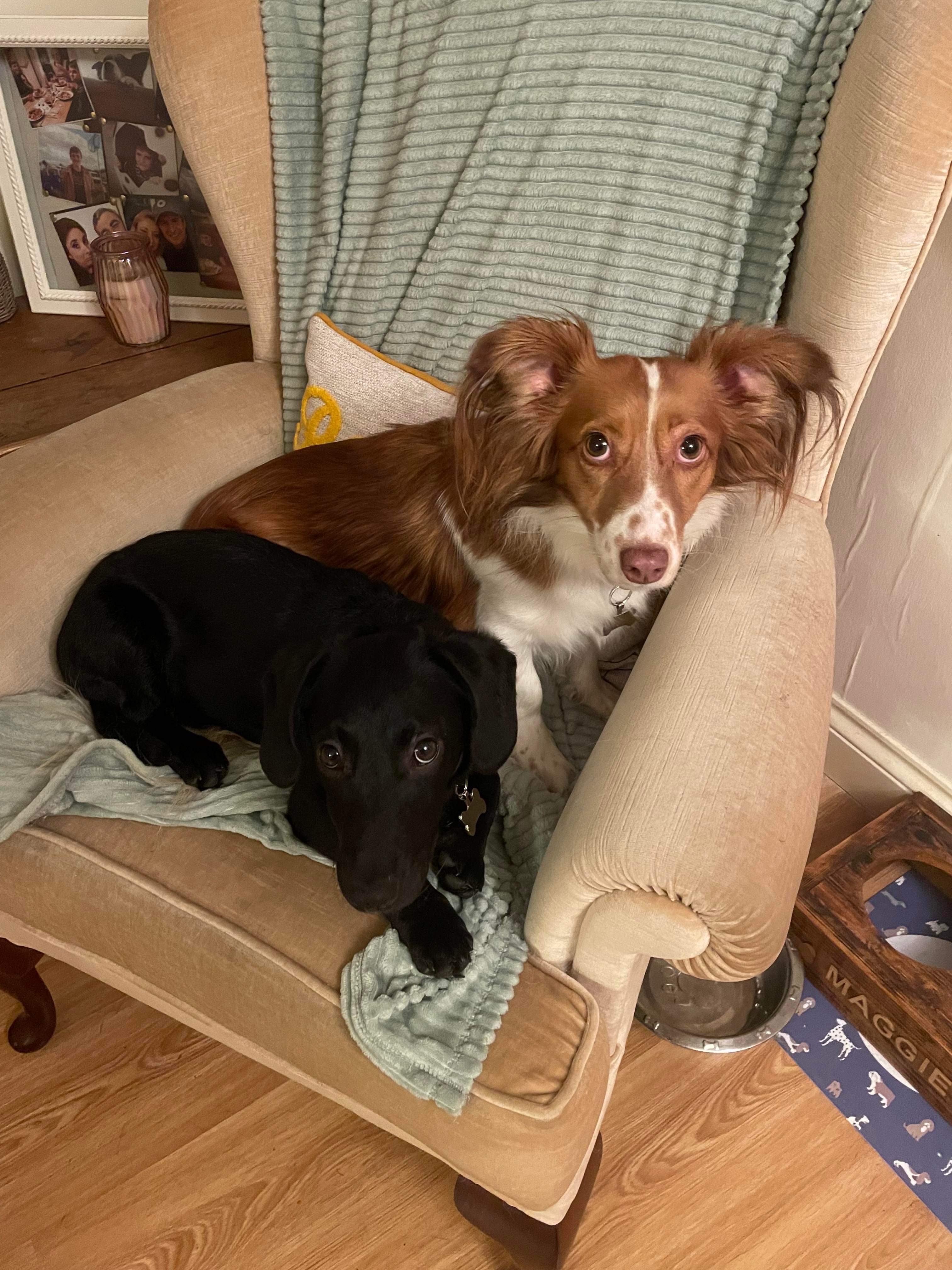
🦮🦮How to Introduce Two Dogs that Will Be Living Together 🦮🦮
Prior to bringing your new dog or puppy home, place anything your resident dog might guard in one area. This may include food bowls, bones, beds and toys. Make sure the new dog has a separate area for all of their items. Even if your pet has never been possessive in the past, it’s best to be cautious and avoid putting the dogs in a position to fight over toys or food.
Avoiding clutter is also important; congested areas may trigger aggression between dogs if they feel forced on each other. You may even try using a tall baby gate to keep the dogs’ spaces separated until they’ve had time to get used to each other.
For your dogs’ first meeting, secure help from a family member or friend so someone can pay attention to each dog. The meeting should be in a neutral environment like a park. It’s best to avoid introducing the dogs in the house — or even in the yard — where the resident dog may become territorial. Open areas are ideal, as there are a lot of interesting sights and sounds to keep the dogs distracted.
What to Do during the First Few Weeks
Try to keep your routine as normal as possible. When it’s mealtime, feed the resident dog just like usual. Feed your new dog in a different room, so there’s no stress over food. Keep up your regular walking and playtime schedule, making sure both dogs get plenty of love and attention.
Keep the dogs’ interactions closely supervised for the first two weeks, until both dogs are fully accustomed to each other. Avoid leaving the dogs alone together until you’re sure they’re comfortable with each other. Reinforce positive behavior with lots of treats and pets
treats are a great training tool.
Watch closely for situations that could lead to conflict, such as fighting over toys or becoming overly excited. Be on the lookout for signs either dog is anxious or uncomfortable, such as growling, snapping, showing teeth, back-hunching, long stares and raised fur. If your dog displays these signs, be ready to distract or separate the dogs to avoid conflict and continue monitoring their interactions. Over time, your dogs should learn to tolerate each other, or even become best buddies. If you still run into issues, a professional dog trainer or animal behaviorist may be able to help.
It’s always exciting to welcome a new pet into your family. Following these steps can help ease the transition for your new pup and resident dog.
And, finally, congratulations on your growing family!
Guide
Introducing children to dogs
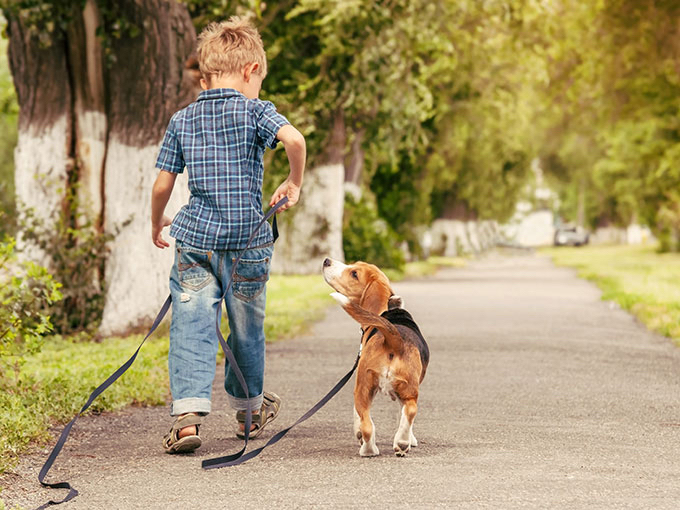
Introductions to children 🦮👫
Even if you were used to children in the past, a new dog will not be used to yours and will need time to get to know them. Help prevent your dog feeling overwhelmed by insisting the dog approach the children rather than the other way round. This prevents feelings of being under threat and your dog is less likely to snap in self-defence.
Children can encourage the dog to come to them by sitting down and offering a titbit or a game with a toy. Ask them not to stare as this can be threatening. If the dog goes to them they can stroke and fuss underneath the animal’s chin to begin with rather than patting on the head. Remember a dog at face level with young children may seem quite frightening, so be prepared to move the dog away if the child becomes overwhelmed or if the dog is about to jump up.
Dogs do not always appreciate being hugged or cuddled unless familiar with it from an early age. It is a great temptation for children to do this, especially if they have been used to doing it to a previous dog. You will need to slowly find out what your new dog will accept, supervising constantly to ensure no unacceptable behaviour occurs on either side.
After the initial introduction, ask the children to give the dog a bit of space and time to find its feet. A new game for the children, introduced at the same time as the new dog, can distract their attention for a while and enable the first few days to go more smoothly. If your children have not owned a dog before, they may need to be taught to respect the animal and not treat their companion as a toy. High-pitched squeals can upset a dog until used to them, so try to keep play as calm as possible.
Some dogs, such as collies, have a strong herding instinct and may nip at children’s ankles, causing them to squeal and run away. This excites the dog, encouraging more of the same, so this type of behaviour must be stopped at once or it can become a habit. Children have to learn not to tease or bully the dog, and the dog has to learn not to jump up at the children, be too boisterous or nip them in play. It is important to supervise all their activities until both parties have learned the rules. It is not advisable to leave children under the age of ten alone with any dog.
Be especially careful with older dogs and children. A dog with impaired vision or hearing may be startled by sudden approaches and may bite in defence. Explain the difficulties the dog is having to the children so they learn to approach more gently
Guide
Basic health care
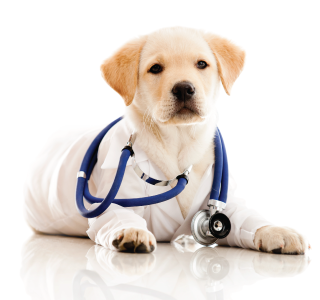
Grooming your dog
Regular grooming is essential for all dogs, even short-coated ones. Weekly grooming reduces hair-shedding in the house. Long-haired dogs require grooming more frequently. Areas where the hair often becomes matted and soiled include the belly, backs of the legs and long hair surrounding the ears. If there is any discharge from the ears, consult your vet
Dog anal glands
The anal glands are two scent-producing sacs that scent the faeces as they are passed. Sometimes they do not empty properly and can cause irritation of the bottom, which makes your pet lick this area a lot or “scoot” his bottom along the ground. The glands do not need routine attention but if there is irritation, see your vet
Dental care
Start brushing your dog’s teeth from an early age, although it is possible to train an older dog to accept it. Toothbrushes designed for humans are not ideal. Dogs require a special brush and toothpaste from the vet or pet shop. Our toothpaste is too frothy and can cause stomach irritation. You can brush without toothpaste, but nice tasting toothpaste may help the process. Some toothpastes contain chemicals which slow the accumulation of plaque
Vaccinations
Vaccinations protect your dog against killer diseases and they are likely to be a requirement if your dog goes into boarding kennels or travels abroad with you. Each injection can contain up to several vaccines against as many as seven different diseases.
After your puppy’s initial vaccination course is complete, he or she will need a follow up injection every year. Which vaccines are given will depend on your dog’s general health and the prevalence of disease in the area you live. For instance, the leptospirosis vaccine needs to be given every year but parvovirus and distemper may only be needed every three years. Your vet should provide you with a vaccination record card so that you know when your dog is due to have his or her boosters
Neutering your dog
All dogs have a right to a caring home and too many puppies grow up to become homeless dogs. For this reason all dogs should be neutered. Both males and females recover quickly after surgery and are usually back to normal within a couple of days. Be sure to follow the vet's advice during the recovery period
Dog flea control
Most dogs get fleas at some point, and they are most common in summertime. They can be hard to spot as they spend little time actually on the dog. Fleas and flea eggs can survive outdoors in summer. Regular treatment is recommended, especially for an itchy animal. A single application of any treatment is not enough for effective control – treatment usually needs to be repeated monthly
Worming your dog
Adult worms are rarely seen so you cannot tell if your dog has worms just by looking. The only way to know is by microscopic examination of the faeces to detect the eggs.
Roundworms may cause illness in humans and dogs. Puppies are infected by their mother; the worms live in the gut and shed eggs in the faeces (excrement). Soil contaminated by faeces becomes a source of infection for both people and dogs. Puppies need worming fortnightly until 12-14 weeks old. Adult dogs need worming at least four times yearly, or more frequently if there are young children or invalids in the household. Ask your vet's advice. Entire females also need worming when they are pregnant, feeding pups or 30 days after a season.
Guide
Separation anxiety
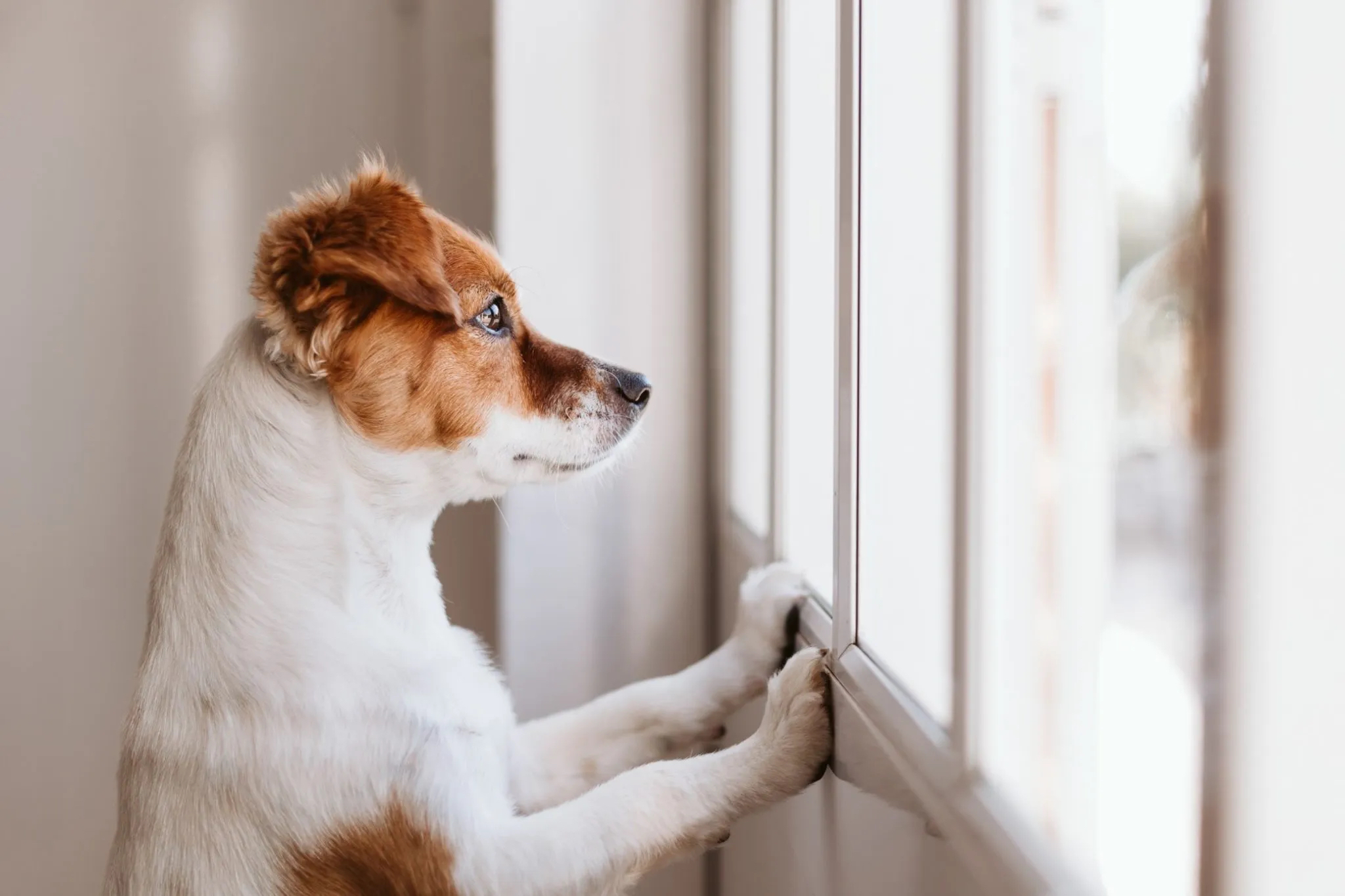
Separation anxiety
Dogs, like us, are very social animals. They would naturally live in family groups and have ‘evolved’ alongside humans over thousands of years to ‘work’ with us and live as our companions. Most dogs would choose to spend the majority of their time in our company. Some might actually prefer the company of their own kind, but what is certain, is that being alone just doesn’t come naturally for most.
Although dogs should never be left for too long on their own, if they get used to being left for short periods when young, they are likely to grow up feeling relaxed and comfortable when left on their own for some part of the day. Here is some advice to help you feel more confident about leaving your dog at home.
Ways to help
It’s a good idea to teach a puppy or new dog to get used to your absence for short periods of time, even if you don’t intend to leave them alone for long. At some point, you will have to leave your dog at home and if they aren’t used to it, they may become very distressed. The idea is to teach them that being alone isn’t scary at all; it’s actually a time to relax and feel comfortable.
Firstly you’ll need to decide on where you are happy for your dog to be left alone. Some people prefer their dogs to be left in a utility room or kitchen due to the ease of cleaning up any potential mess. There is nothing wrong with this – however you don’t want to make the mistake of putting your dog in this area only when you are leaving them. This is because you want them to feel as comfortable and relaxed as they possibly can, and if they only get put in this area when they are left, they may learn to only associate it with isolation.
Stair gates are fantastic tools to use when helping dogs get used to being left alone. They aren’t as scary as a closed door as they still allow your dog to see, smell and hear you. The key thing is that you’ll be able to help your dog get used to a little bit of distance between you while you are still in the house. Stair gates are best placed on the door to the room you have decided you will leave your dog alone in. Put a comfortable bed and water in this room, and chew items too should your dog need them (chewing is a calming activity). Many dogs will benefit from being left with a radio on low level as this provides a little background noise and ‘company’. It may also muffle any startling sounds from the outside, which might otherwise make your dog jump. Talking stations are best, as opposed to loud music. Putting an item of clothing you’ve worn recently in your dog’s bed may also increase your dog’s sense of security during the following training and when they are left alone. Adaptil products can also be of benefit as they release comforting pheromones, which can help dogs feel more relaxed.
Training
Randomly during the day, pop your dog behind the stair gate with a tasty chew, e.g. a Kong toy stuffed with treats or smeared with pate. Close the stair gate behind you and go about your business as normal, but try to stay in eye and earshot of your dog, especially if they are young or new to your home. After a few minutes, open the stair gate - ideally you want your dog to be relaxed and still engrossed in the treat. Your dog can decide what they want to do at this point, either stay in the room or leave.
If you find that your dog struggles with this at all, you can make it easier for them by staying in this room with them, but it’s important that you don’t interact with them – just sit there quietly. Once they are used to the idea of being in the room with you (but not interacting with you!) you can start shutting the stair gate for a few minutes.
Over a period of days, gradually increase the time your dog is left behind the stair gate until you get to a point that they feel relaxed enough for you to wander out of sight completely. Build your dog up to being left in this area for up to half an hour while you are busy elsewhere in the house.
Once your dog is comfortable with this, you can begin to get them used to short periods of time alone in the house.
Prepare the area as you normally would and follow the same routine as before. Once your dog is comfortable and tucking into something tasty, get yourself ready and leave the house.
Return after a few minutes (before your dog starts to become anxious). If your dog is comfortable with this length of time, fantastic! Repeat a few times over the course of the day.
Gradually increase the time you leave your dog alone in the house to about half an hour over a period of days,
If your dog shows any sign of worry, take a few steps back and start from where they were last comfortable
Some dogs will progress easily, but others may need more time to adjust, so take the steps very slowly. If you find your dog begins to look worried when you pick up your keys or put on your coat, then you will need to spend some time ‘desensitising’ your dog to these particular sounds. You can do this by regularly popping your dog in the area during the day as before and get them used to seeing and hearing you pick up your keys, coat or bag. At this point, it’s important not to actually leave the house – just allow your dog to get used to these sights and sounds while they are relaxed and comfortable.
Once they look calm when they see or hear these things (this may take several days), then you can start again with actually leaving the house for short periods of time
Keep greetings friendly, low-key and predictable on your return, even if you come home to find your dog has chewed something or toileted. It’s important to understand that punishment won’t help your dog – just go back a few steps and start again.
If you need to leave your dog for several hours, make sure you have built them up to this with the above training. You’ll need to make sure they have been well exercised and have had the opportunity to go to the toilet. For some dogs, a small meal may help as this may make them feel more relaxed and sleepy.
Dogs who have been in rescue or have been rehomed several times can sometimes struggle with being left, especially in the first few weeks of being rehomed. This is probably due to a variety of factors, including the stresses experienced while in kennels and learning to adapt to a new home
Guide
Advice for chewing
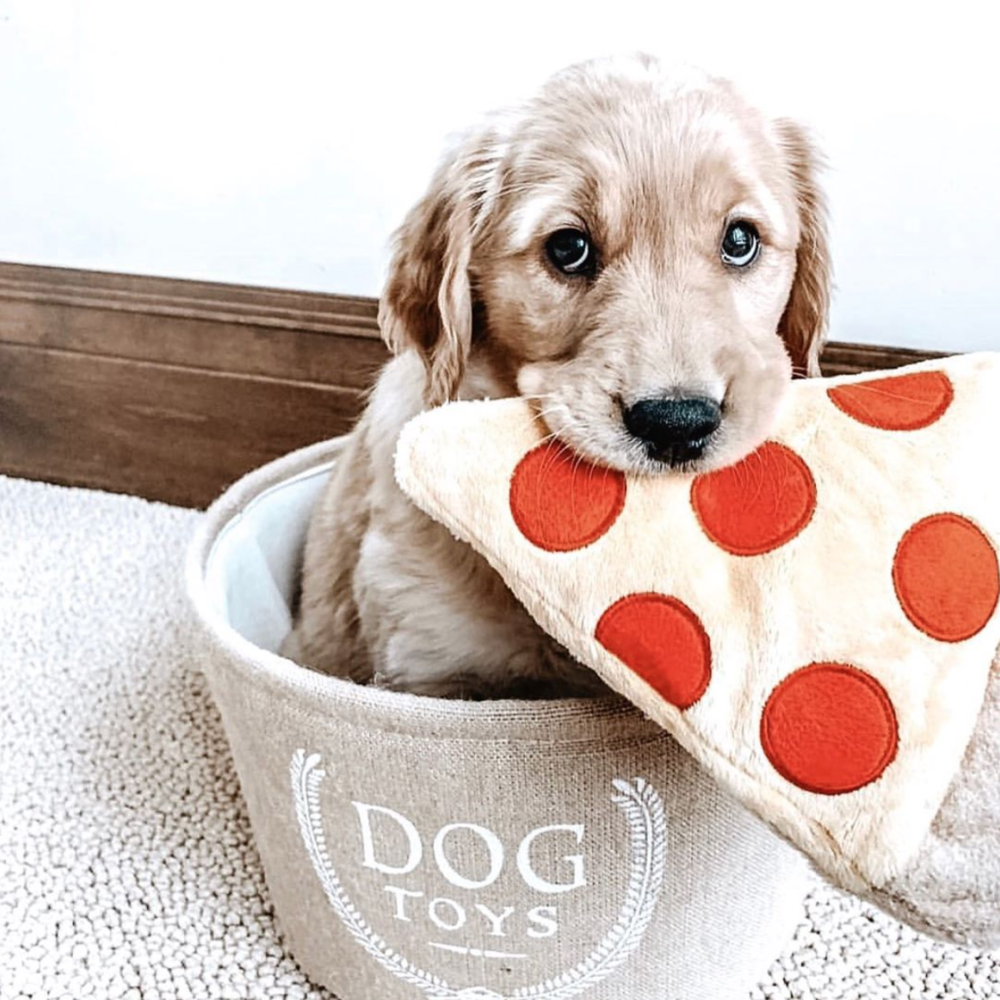
Adolescent chewing (or exploratory chewing as it is also known) commonly occurs in dogs between puppyhood and adulthood at seven to 12 months of age, and can last for up to six months. It is different from puppy teething since it happens after all the needle-like puppy teeth have fallen out. Adolescent dogs often have an uncontrollable urge to chew, which could be because of discomfort in the gums as their adult teeth are settling into the jawbone.
Adolescent chewing also occurs as young dogs attempt to explore their environment and discover new things. Reasons include the following.
Boredom
Dogs left alone for long periods or not getting enough mental and physical stimulation are likely to become bored. Working breeds have naturally high activity levels and become easily bored in the wrong home. This can lead to destructive behaviour.
Puppy teething
Teething for puppies occurs between three and seven months of age when puppies have an uncontrollable urge to chew to relieve some of the discomfort in their gums. Chewing also facilitates the removal of puppy teeth and the eruption of the adult set.
Attention seeking
If your dog learns that chewing something forbidden (such as the TV remote) makes you get up and chase round the room, the animal quickly learns that this is a great way to get attention.
An unbalanced diet
If not getting enough calcium for example, your dog may try to compensate by chewing stones or plaster. All dogs should be fed according to their age, weight, health status and the amount of exercise they receive. Consult your vet for advice on the best diet for your dog.
Distress at being left alone
Some dogs cannot cope with being separated from their owners and are destructive when left (see Alone at home).
What can be done about my dog chewing?
🦮Supply your dog with items that are safe and tough enough to survive being chewed – this means they should not splinter, or break into small or harmful pieces that can be swallowed
🦮Make sure the dog does not have access to places where there are valuable or dangerous items if you are not there to supervise
🦮Regularly exercise your dog – especially away from home, at least once a day (ie do not just exercise your dog in the garden)
🦮Visit different environments when you walk your dog (such as pavements, fields, woods, parks and beaches). Care must be taken with puppies until they are fully protected by vaccination.
🦮Teach your dog what is acceptable and unacceptable to chew
🦮Try to play with your dog at least three times a day, for at least five minutes each time. Short, frequent play sessions are the best
Kongs
All dogs like to play on their own sometimes, so it is important to leave at least one “safe” toy down for them to play with at any time. An excellent choice for this purpose is a chew toy such as a Kong (available from pet shops). This is a firm rubber toy, hollow on the inside and which can withstand lots of chewing. If you stuff biscuits inside the Kong or smear some cheese spread inside, your dog will work to get the food out, and will nibble, lick and chew on the toy for some time. Kongs are also good at stimulating play and chase behaviour, since they bounce unpredictably in different directions when thrown.
Activity balls
These are hollow dimpled balls, the size of a small football, with two holes. If you place small pieces of dry food inside (such as a portion of the dog’s daily food ration or mixer), the dog has to roll the ball around to get the food to drop out of the holes. This keeps them occupied for quite some time.
Chews
Chews can be given when a dog is settling down for some quiet time, though you must supervise your dog while they are chewing.
Reindeer antlers are a great choice.
Always reward your dog for chewing the right things. Every day, provide one or two chews your dog has not seen for a while. Leave them out on the floor whenever your dog is in the room. When you see your dog chew one, praise gently.
Correct your dog when he chews the wrong things. If you notice your dog is about to chew something prohibited, quietly direct attention onto an acceptable chew, and make a huge fuss when the dog begins to chew on it. This will encourage your dog to select the items you want to be chewed
Guide
Resource guarding advice
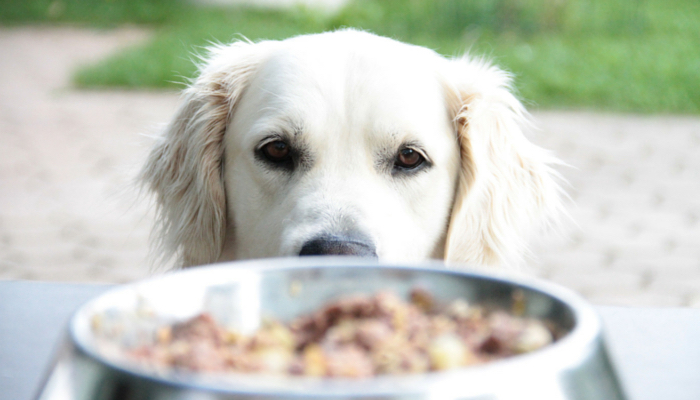
🦮🦮 Resource guarding 🦮🦮
Just like us, dogs can become worried if they feel that something they value greatly might be taken from them. The fear of losing a precious resource can lead to some dogs using aggression as a way of keeping the item within their possession. We can prevent our dogs from feeling so frightened by teaching them that we pose no threat to the things they love!
Why do some dogs guard resources?
Guarding behaviour, which might include standing over something they value, running away and hiding with it, lowering their body while holding their ears back, and even growling as anyone approaches, is aimed at keeping that item safe. It’s important to understand that the main reason for guarding is fear. This means that taking items away from your dog or telling them off for guarding is likely to make their behaviour worse in the long term. They may become even more worried and feel the need to protect those valuable things even more!
Preventing problems
It’s a lot easier and quicker to prevent resource guarding than it is to cure it. Teaching our dogs from the start that there is no need to worry about losing anything they find valuable is an incredibly important lesson. It means they can always relax and enjoy the things they love without having to panic. Being consistent and always swapping items will help dogs learn to share without being worried
What to do
Every time you need to take something from your dog, swap it for something else. This should be something that your dog considers to be equally or even more valuable. This way your dog can feel comfortable about you taking something they like away, as you’re exchanging it for something they love!
For example, if you are taking a toy, swap it for another favourite toy or tasty treat. If you are taking away a chew, swap this for extra special treats such as chicken. Offer your dog the better item before trying to take what they have away. Or drop several pieces of food onto the ground slightly away from your dog, so they have to leave whatever it is they have in order to go over to eat the treats. Then you can calmly pick the item up and remove it while they are busy enjoying themselves. As much as possible, return your dog’s item to them shortly after swapping it.
Your dog will start to feel happy about you approaching them when they have something they treasure, because they’ve learned this means they are about to get something extra special. They might even get up to greet you, dropping what they have in the process. This is perfect! This means they have linked your approach with good things happening, so they have absolutely no reason to become fearful
Dropping food near your dog’s bowl and then walking away again whilst they’re eating will help them to link your approach with good things. Remember, the food you drop must be tastier than the food they are eating, so they always see you approaching as a bonus and nothing to worry about! Progress this by placing down an empty bowl, then walking towards it and dropping a little food right into it. Retreat and watch your dog eat their food. As soon as they’ve finished, and the bowl is empty again, approach it and drop in another handful. Your dog will be learning to look forward to you approaching their bowl
If your dog is ‘stealing’ household or human items, make sure you don’t chase them as this can cause more problems. Even if they don’t want to give up the item, they might enjoy being chased and learn to steal things just so you’ll run after them
Unless it’s dangerous to do so, simply ignore your dog and create a distraction by quickly leaving the room so they follow you, or picking up an item you are happy for your dog to have. Start to interact with this yourself, turning it over in your hands, throwing it up and down, and playing with it while ignoring your dog. Your dog now has a choice – carry on all by themselves with no attention from you or join in with all the fun that you are having! When your dog comes over to you, reward them and encourage them to interact with their own things. Then you can calmly collect your own items when they are happily occupied.
Never grab your dog and prise something out of their mouth unless this is absolutely necessary, for example if they have picked up a packet of medicine. If you do ever have to do this then be sure to give them lots of treats, play and praise immediately afterwards to counterbalance the worrying effect of you prising something away from them.
If your dog is already showing signs that they are worried about having anything taken away, or anyone even being near their treasured things, it’s important to avoid making things worse by approaching them or trying to remove anything from them. Simply leave them well alone when they are enjoying food or playing with toys by themselves, and ask your vet to refer you to a qualified behaviourist for help.
Guide
Puppy mouthing advice
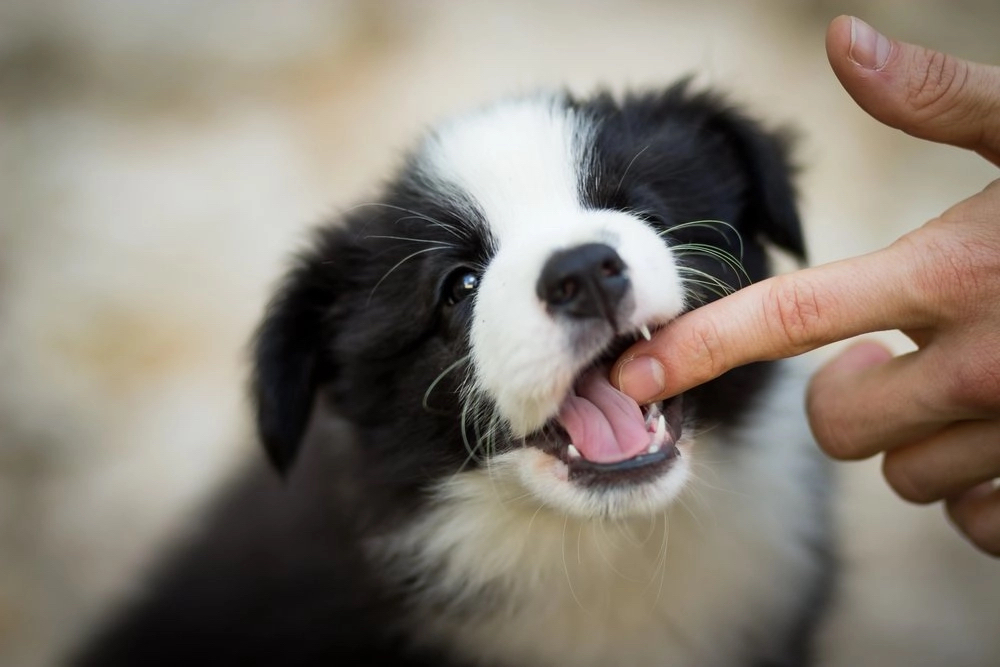
Why do puppies mouth ?
It's because puppies investigate the world using their mouths so it’s perfectly natural to expect them to nibble and bite fingers and hands when they are young. Puppies also need to use their mouths and teeth a great deal to find out how this important part of their anatomy works. Puppies will typically attempt to play with humans by mouthing and biting. It is something that they did in the litter with their siblings (and usually mum) and it’s a very normal part of learning how to play with dogs.
It’s also important to remember that puppies will be experiencing some discomfort during the teething period in the same way that children do, so make sure that you give them lots of opportunities to relieve this by providing chew toys.
When do puppies start mouthing?
Puppies often start to do this when they come to live with us – usually they are doing this as they want to play and haven’t yet learnt that this isn’t much fun for us! Some puppies, particularly those from working breeds, seem to play bite more or harder, and this is probably because they tend to be more energetic.
The most important thing to remember is that for the vast majority of puppies, mouthing or play biting is a phase that they will typically grow out of once they reach between three and five months of age.
Try not to think of it as something that must be prevented entirely – think of it as something that will get better over a short period of time if managed well. Just like very young children who go through all sorts of difficult phases as they grow up, puppies need our patience, support and guidance during this time to help them understand that people should be treated gently.
How to stop mouthing and biting
Redirect play biting and mouthing
Keep a variety of toys to hand so you can redirect play biting safely. If your puppy begins to mouth your hands, try not to move your hands away or squeal (this will excite your puppy and encourage more vigorous play!) Instead, gently transfer them onto a toy by animating it and allow them to play with that instead
For some puppies, just providing them with an outlet for play biting or mouthing will be enough, and they will learn over several weeks that playing with or chewing toys is very satisfying indeed and will be far less likely to mouth people.
Take away temptations
Loose clothing, fluffy slippers and dressing gown ties can be irresistible to some puppies, especially when they move around as you walk around the house.
Until your puppy has learnt how much fun he can have with toys and less of a desire to play and tug on absolutely everything, you might want to take these temptations away from them for a short time
Mouthing puppies and children
If you have children, puppy mouthing can be a real issue as it’s hard for them to react calmly if they are the target.
Puppy teeth are sharp and it’s not reasonable to expect children to deal with play biting on their own, in fact often their reactions are likely to encourage more mouthing! You’ll need to manage interactions carefully and actively supervise, and if you can’t then temporary separation within the home is a must – this is where stair gates are extremely useful
Why rest, regular meals and exercise will help
Make sure your puppy gets a lot of rest – puppies need a great deal of sleep, often a lot more than they think they do! Just like babies and small children, young puppies can get excitable or irritable if overtired and this may trigger play biting. If you have a reluctant napper, you may need to schedule in quiet time for your puppy to encourage them to switch off at regular intervals during the day.
Give your puppy regular meals and make sure they are getting the right amount of food for their age. Puppies have tiny tummies and need to eat several meals throughout the day. Again just like people, hunger can make them irritable, which may trigger mouthing.
Try to keep your puppy satisfied, both mentally and physically, during the day. Although it’s important to ensure your puppy isn’t over exercised for their breed and age, they need plenty of opportunities to play, run, explore and learn about the world they live in. A bored, under-stimulated puppy is far more likely to play bite than a puppy who has all their needs met.
What if all of this doesn’t work?
For persistent play biters, you may have to attach a lightweight lead to their collar so that you can easily lead them to another room (behind a stair gate is a good idea) for a short time apart from you. Make sure you attach this prior to any episodes as it won't be any fun trying to attach the lead to a wriggly and mouthing puppy.
If they do mouth hard calmly pick up the end of the lead and take them to your chosen area (a room nearby is best). Leave them here for no longer than 30 seconds, usually until they are calm enough to join you again - any longer and your puppy won’t make the connection. Repeat if your puppy bites hard again. Do not use a puppy crate for this training as this should be a safe place for relaxing
Things to avoid when teaching your puppy not to play bite and mouth
🦮Don’t encourage play biting with fingers. As cute as it might seem when your small puppy is chomping on your fingers, you really don’t want your puppy growing up learning that play biting is an appropriate way of interacting with people – as your puppy grows, this habit can be very problematic and painful.
🦮Avoid using high-pitched squealing or similar noises in an attempt to let your puppy know they have hurt you – this tends to excite puppies which can often encourage more biting.
🦮Don’t tell your dog off. Although it might be painful when your puppy play bites you, you don’t want to frighten them as they may begin to lose trust in you. It’s better to expect and anticipate mouthing episodes, and then manage them in a safe and helpful way.
Guide
Meeting strangers
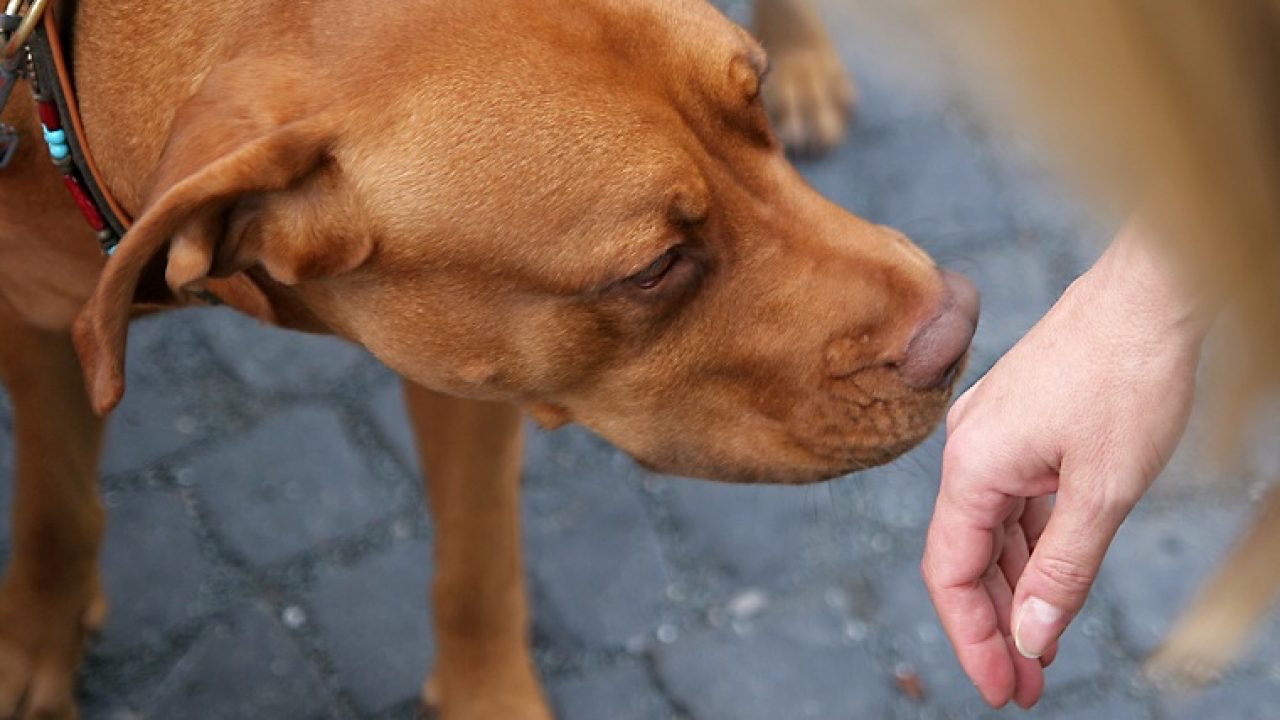
Meeting strangers
Stay relaxed and help your puppy to understand that you aren’t worried or concerned at all in the presence of unfamiliar people – in fact, let your puppy know that you like them! If it’s safe to do so say ‘hello’, and where you can, chat as you are passing people by.
If your postman, delivery driver or local builder is willing, then don’t forget to include them too. Being introduced at an early age will help create a positive association with these people who might otherwise be seen as a threat
How to introduce them to strangers
Most puppies will enjoy meeting new people, and most people will enjoy meeting a puppy! But it’s important that your puppy is not overwhelmed. You can help them out by:
asking people to crouch down to meet your puppy
allow your puppy to approach a new person, rather than the other way around – this way you can be sure that they are feeling confident enough to meet somebody unfamiliar
not letting strangers pick your puppy up to hug them. It may frighten your puppy (especially if they're shy)
avoid using food when introducing your puppy to strangers as this may teach them that all people carry food on them, which is not ideal. You’ll want your puppy to approach people because they want to say hello politely, not to receive treats!
Livestock, horses and cats
Puppies should see, if possible, a variety of animals such as livestock, horses and cats, especially if you live in an area where you will come across them regularly.
They will need to be kept on lead to stop them learning to chase them. This can be a really challenging behaviour to overcome once learned.
Reward your puppy verbally and with treats if they're calm and relaxed in these situations. If they become a little excitable (which is only natural at first), then create a bit of distance until they get used to staying calm in these situations.
Different environments
As well as meeting other animals, puppies should encounter a variety of different environments and situations. This provides an opportunity to become familiar with a wide range of different scents, sights and sounds.
If your dog is socialising well with humans, familiarisation with different environments should happen naturally. However, it's worth making an effort to check that your puppy is gradually becoming accustomed to:
🦮car travel
🦮traffic
🦮the countryside
🦮towns
🦮cities
Visits to the vet
At some point your puppy or adult dog will have to go to the vet’s if they are unwell or have hurt themselves. Being handled when you’re not well or in pain is unpleasant and this may in itself cause a dog to feel scared enough to behave defensively.
One way you can help prepare your dog for this is to provide them with lots of positive experiences at the vet’s before a trip is needed for more serious reasons.
Puppy training classes
A good puppy class can help with socialisation and get you started with your training, but remember that a weekly session won’t be enough and the majority of the work will need to be done by you away from the class.
Puppies usually attend between the ages of 12 and 20 weeks and the entire family is encouraged to be there so that all the puppies present get to meet a wide variety of adults and children
It's normal for some puppies to be a little unsure of things on their first few days of experiencing the outside world, so they may appear a little worried at first. Most puppies quickly gain confidence, but some shy puppies may need extra time and extra distance from things they are worried about
Guide
Toilet training advice
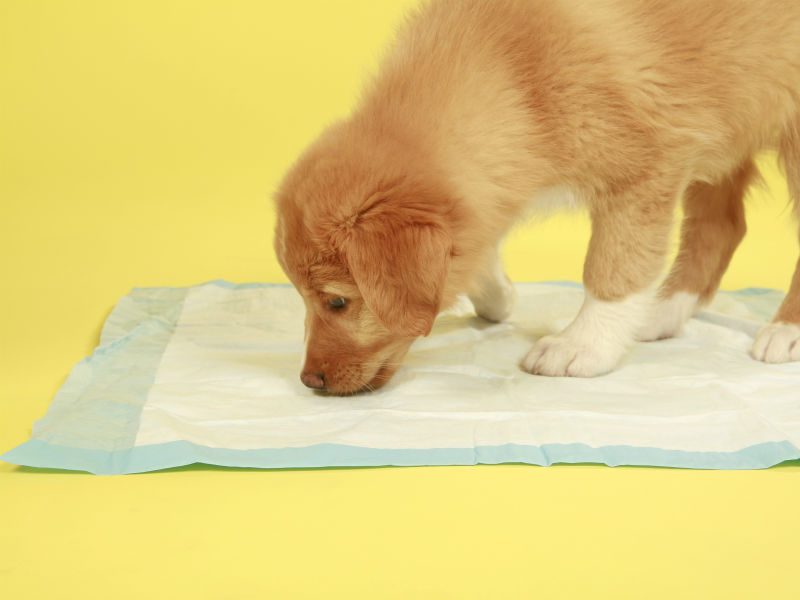
Toilet training guide
Once you take your puppy home, you’ll have to begin showing them where you’d like them to toilet – usually this will be your garden or if you don’t have one, an outside area very near to your home.
Unless your puppy has been raised in dirty conditions, house training should be relatively easy, particularly if you stick to a good routine. Dogs naturally want to toilet away from their living area and if your puppy was raised at a Blue Cross centre, the team there will have already started this process giving you a good head start.
How to toilet train your puppy
Start a toilet training routine
When you first wake up, last thing at night and very regularly during the day, take your puppy outside to a place in your garden that you have chosen. If you use newspaper or puppy pads overnight, pop some of the soiled paper in this area as the smell will help your puppy to know where to go to the toilet. Let your puppy walk up and down or run about and sniff the area (both exercise and sniffing help stimulate going to the loo). It’s best to let your puppy out in the garden without a lead on as it will be too restrictive, however if your puppy needs to be on lead for whatever reason, an extendable lead is a good solution as this will give them the freedom they need to toilet.
Avoid playing exciting games in the garden before your puppy has toileted, as this is likely to distract them from the main purpose of going outside. If they want to come back inside straight away, or look confused, patiently walk up and down slowly to encourage them to move about and sniff the ground. Stay outside with your puppy until they have done their business at which point you can give gentle praise. Avoid leaving your puppy outside in the hope that they will eventually go to the toilet, as most puppies will not want to be left alone and will instead concentrate on getting back to you, rather than learning to go to the toilet outside. You might also miss the opportunity to praise your puppy if they do go, or if they don’t go, they may then be ‘caught short’ once back in the house!
If they still haven’t gone to the toilet after five minutes, come back inside the house, but keep a very close eye on them. Repeat this process 10 minutes later (and 10 minutes after that if they still haven’t gone) and hopefully your puppy will eventually toilet in the right place. Set aside lots of time for this and be prepared for several visits to the garden at first. Be patient and your persistence will eventually pay off!
Between trips to the garden, supervise your puppy when in the house. This means keeping your puppy in view at all times and being aware of what they are doing – this is especially important during the first few months. Pay particular attention to the times after your puppy has eaten, woken up or after periods of excitement, such as play.
Signs your puppy needs the loo!
Watch for the typical signs that your puppy needs to go to the toilet – these may include sniffing the floor, circling, looking restless or going into a room they have previously toileted in. Take your puppy immediately to your chosen place in the garden and wait patiently until they have done their business and praise gently.
What to do if your puppy has an accident
Expect your puppy to have several accidents during the first few months of house training. They have very small bladders, and just like young children who are learning to use a potty, they are easily distracted, especially when excited!
It’s important not to punish your puppy if they toilet in the house – this is counterproductive and won’t help them. It will only frighten them and may teach them to avoid toileting in front of you. You may have heard that it is a good idea to rub your puppy’s nose in any mess or take them over to the scene of the crime and tell them off – unfortunately training methods like this are extremely damaging and confusing to a puppy so best avoided entirely!
If your puppy does have an accident when you’re not looking, just clean it up calmly. If you catch your puppy in the middle of going, quietly pick them up and pop them outside to see if they can finish what they started in the right place – if they do, then praise them gently. If they don’t, just be extra vigilant in the house next time.
How to clean after your puppy
It’s important to clean any mess in the house using a warm solution of biological washing powder (for example, a teaspoon of powder dissolved in a cup of warm water) or a specially formulated product from your vet. This type of product will clean the area properly. Avoid using ammonia based products such as bleach as this is likely to cause your puppy to use the same area again.
Toilet training when you are out of the house
During the initial stages of house training it’s best not to leave your puppy alone - ideally you should wait until house training is well established. If you do have to go out, then leave them in the area that they are most comfortable making sure your puppy has had the chance to exercise and go to the toilet beforehand. Leave out some paper for your puppy to toilet on (away from their bed area) should they need to go - although this won’t teach your puppy where you would like them to go to the toilet, it will make any mess easier to clean up and stops the area becoming soiled.
Toilet training a puppy at night
Most puppies don’t have strong enough bladders to be able to hold on overnight for several months, so unless you have your puppy upstairs with you, expect to come downstairs to a bit of mess. Lay down newspaper away from their bed area until your puppy can hold on for longer. Remember to take them out first thing to give them an opportunity to relieve themselves as soon as possible.
How long does it take to toilet train a puppy?
You’ll need to continue with this routine for several months, although some puppies may need extra time and help. During this process, your puppy learns about getting praise for going to the toilet outside and, since you’ll be supervising them in the house, they won’t get an opportunity to go inside. Throughout the first few months and for a while afterwards, continue to go out with your puppy to the garden in order to praise them until they know exactly what to do.
After a few months of the above routine, and as your puppy gets older - gradually increase the time between visits to the garden. When your puppy has the urge to go, they will probably become more active or may wander over to the door. Watch for a change in their behaviour and take them out quickly. Gradually, as you start to recognise the signs that mean your puppy needs to go, you can relax your supervision in the house. Some puppies may need reminding regularly, so make sure you give them plenty of opportunity to relieve themselves outside.
Keep at it!
Although house training a puppy can be hard work and tiring - be patient and consistent, and all your efforts should pay off!
If you need help at all with house training your puppy, please don’t hesitate to contacts us
Guide
Visiting children
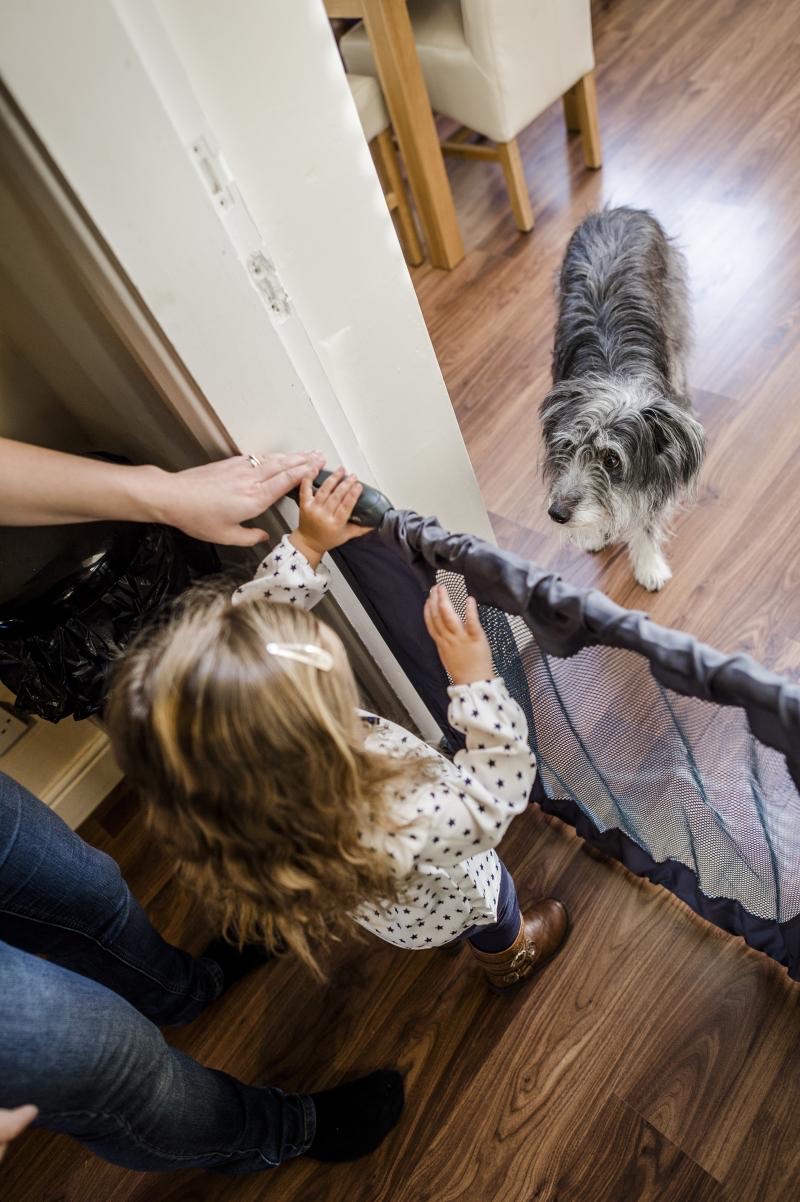
Preparing a child to visit a home with a dog
Before you welcome a child into your home, it’s a good idea to set some ground rules. We strongly recommend talking to the visiting child’s parent or guardian about how to keep everyone safe before the meeting takes place, particularly if the child is a baby or is too young to understand the rules.
To help stay safe a child should not approach when the dog:
🦮is eating
🦮has a toy
🦮has puppies
🦮is sleeping
🦮is in bed or under a chair or table
🦮is sick or injured
🦮is trying to move away
If the child is old enough to understand, ask them to think about the dog they are about to meet from the dog’s point of view. Why not turn this into an activity and draw up some ‘doggy dos’ or ‘doggy rules’? Not only can this be fun to do together, but it is something you can easily refer back to if needed. Doggy rules could include:
🦮Do not allow chase games or wrestling games between children and your dog. Your dog may become too excited and hurt someone.
🦮Never sneak up and surprise a dog
🦮Do not allow anyone to tease a dog
🦮Never hit or hurt a dog
Understandably, children may want to make friends with the dog, and may not realise the following situations might be seen by the dog as a threat:
🦮Cuddling the dog
🦮Taking the dog’s toys away from them so they can play a game
🦮Getting into bed with the dog
🦮Comforting the dog who is hiding under the table
Your dog may feel worried or confused when you are interacting with children in a way that they have not experienced you doing before.
For example, human adults tend to praise young children for doing something well in a similar way to how they praise their dogs, i.e. making a fuss with lots of congratulations and often using higher pitched sounds. This can make dogs really excited, and is an example of a time when separation may be the best idea.
Unfamiliar items to dogs that are lots of fun, or simply practical, for children can cause confusion and worry too. Baby walkers can accidentally (or not!) ram into dogs’ feet, which can make them worried, and bouncers and swings that attach to doorways can be very exciting for them too
Preparing your dog and home for visiting children
Settling your dog
Ensuring those first few interactions are positive for both the child and the dog will help set you up for future visits.
Set yourself a routine that works for you and your dog. This could include walking your dog before your visitor arrive, settle your dog in their quiet place, don’t rush ensure both child and dog are settled before
Supervision
It should go without saying that children and dogs should not be left alone together without adult supervision. Realistically, you will not be able to actively supervise your dog and the children in your home 100 per cent of the time they are all in the same place. This is where careful management proves a godsend (see ‘separation’ below).
Active supervision means you are consciously watching both the child and dog; if you need to pop to the car or prep lunch for a few minutes, it’s best to separate the dog and child while your attention is focussed elsewhere. Bite incidents can happen in seconds, so it’s safest to avoid the risk.
If your dog has access to the same area where a child is present, the number one rule is that you must supervise. If active supervision is not possible, you must separate (see below).
Depending on their age, a child can be unpredictable in their behaviour (particularly from a dog’s point of view) and squeals of delight, temper tantrums and boisterous play can be an exciting or frightening experience for dogs and puppies. You’ll need to show young children in particular exactly how you want them to interact with your dog, by encouraging gentle interaction at all times. Seeing a relationship blossom between a child and dog is a lovely sight, but this should never be forced and better relationships are built by trust, boundaries and positive interactions.
Many puppies and dogs will put up with a great deal before showing any obvious behaviours that they are uncomfortable with and it’s just not fair or responsible to expect them to cope with boisterous or rough handling. By being proactive and using separation in your daily routine this will help make your dog feel more comfortable and limit the chance of them having to get to the stage where they show the signs of stress behaviours.
Safe interaction tips
Most importantly, actively supervise. When the visiting child(ren) and your dog are together, make sure you pay attention to what is happening at all times as you’ll want to intervene at the earliest opportunity should either look worried or you see that things are getting out of hand.
Encourage gentle stroking at all times - no pulling, grabbing, heaving petting or sitting on!
A good way to see if a dog or puppy would like to have a stroke is to ask them! When they are awake, call them to you as opposed to approaching them. If they approach confidently, then this is their way of saying ‘yes’ and if they stay where they are, they are politely declining your invitation and you can try again later. This is a really simple exercise that you can invite visiting children to carry out (once they are old enough to understand your instruction) and it enables your dog or puppy a choice in the matter too.
Take care that the visiting baby or child doesn’t touch or walk into your dog when they are eating or chewing. Although the child is unlikely to want to eat the chew, your dog won’t know this and may feel worried and behave defensively.
Be careful when children are playing with their own toys. Dogs can find it tricky to know if a toy is theirs or a child’s, which can be confusing to them. Toys can also be really exciting for dogs and may raise their activity and ‘bounce’ levels, which can be unsettling for children.
Human food is extremely tempting to many dogs. If your dog is used to humans eating around them and you are comfortable with this, ask your dog to settle and ensure you supervise while people are eating. If your dog is easily distracted by food it is safer to move them to a separate area or crate while people are eating, particularly if the visiting child is young and may throw food around or onto the floor.
If you spot your dog becoming worried, intervene. The dog body language section below will help you to recognise the signs your dog and the child(ren) may need some time apart.
Equally, if the visiting child(ren) is becoming frightened or annoyed by your dog, intervene. It’s much nicer and safer for both if you remove the dog in these situations (and give them something else to do!) as this will ensure that their relationship stays on track for repeat visits
Guide
Crate training advice
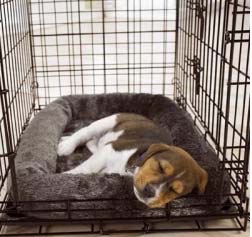
Once you’ve chosen and set up your dog’s crate, you may find they are naturally curious and investigate straight away. Make sure you have the door secured open so it never swings shut on them. Reward your dog if they choose to investigate – knowing your dog will help you understand what kind of reward they’ll love the most. Some do well with lots of praise, others with a food treat or two and some just want to play with you so tailor the reward to your dog but make sure they get it when they’re exploring the crate.
Not all dogs will investigate straight away and some might even be a bit wary of the crate. This is absolutely fine, it just means you’ll need to keep rewarding them positively when they choose to go near the crate. Try putting treats or their favorite toy near the crate. As they gain confidence, move the treat or toy to the door and finally inside the crate
Step two – feeding and closing the door
Once your dog is happily spending time in the crate without any worries, you can start to feed them their meals in the crate. This will help them see being in the crate as a positive experience. Use a command word when you’re about to get their food like “crate” or “bed” so that they know to go there, then place their bowl inside the crate. They may even start to automatically go into their crate at meal times which is a positive sign.
When your dog is happily eating their meals in the crate with the door open, you can start to close the door for a moment. Close the door after your dog has started eating and make sure to open it before they finish at first. This will get them used to the idea of the door being closed. If closing the door makes them anxious just start by touching or half closing it at first and wait a little longer until they are comfortable hanging out and eating in the crate before you close it fully
Step three – increase the time the door is closed
As your dog gets used to the door being closed while they eat, you can gradually increase the amount of time the door is closed. If they start to show any signs they are uncomfortable, you may need to go back to leaving the door open and work back up again once they are comfortable.
You should be able to build up the time the door is closed so your dog will happily lie down and settle in their crate after they’ve eaten with the door closed
Step four – stepping away
Once they’re happy to do this for a few minutes with you there, try stepping away a few steps and before coming back over. If your dog gets stressed or excited when you move away, stay calm and only go back to them once they have calmed down and next time don’t go so far that they react. Once they’re happy for you to potter around, or pop out of the room for a moment while they’re eating, move on to the next step.
Step five – staying in the crate outside feeding time
Once your dog can happily stay in their crate with the door shut after eating and you can step away from their side, you can start to train them to be in the crate outside of feeding time as well. By now your dog knows the command word such as ‘crate’ or ‘bed’ so use this to send them in and give them a reward for doing it. Once they are comfortable going into their crate outside of feeding times, ask them to sit or lie down inside and briefly close the door. Start with short periods in the crate and stay close by, rewarding your dog for calm behavior.
Again, gradually you can increase the time with the door shut, and once they’re okay with that they start to step away.
How to use a crate
Once your dog is relaxed spending time in their crate, you can use it for longer periods such as overnight or while you are out. If you can, give them a puzzle or enrichment feeder to keep them occupied or a toy that is safe to leave them alone with. These will help your dog avoid boredom.
If you want your dog to spend the night in their crate, be as consistent as possible. If sometimes you use a crate and sometimes don’t, this can be confusing for your dog and could even make them anxious at bedtime if they can’t predict what’s going to happen. Sticking to a routine will help them keep calm as they know what to expect.
If you use a crate to travel with your dogs, make sure it will protect them in the event of an accident.
While you should never use the crate as punishment, it can be valuable to use it as a “time-out”. If your dog is getting too excited or getting anxious in a situation around the house, you can ask them to go to their crate and leave them with a toy or puzzle to play with until they have calmed down or the situation they are reacting to has ended.
Top tips for crate training
Always be consistent and persevere.
Make your dog’s crate as inviting as possible for them.
Never use the crate as punishment.
Don’t leave your dog in their crate too long. Dogs ideally shouldn’t be left alone for more than four hours.
Make sure your dog has access to their crate most of the time so it becomes part of their environment, rather than only going in when you are out.
If your dog starts whining, barking or getting excited while the crate door is closed, try to wait until they stop then reward them for quiet behavior.
If your dog seems stressed or anxious at any point in the training, go back a step.
Let your dog out to go to the toilet before putting them in their crate for any period of time to avoid accidents.
